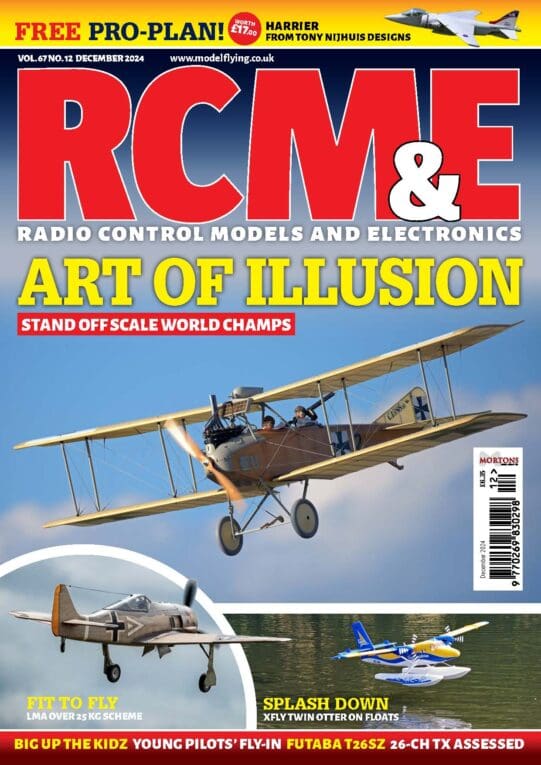Following on from Part One of this review, it’s time to move on to radio installation. Choice of radio gear is very much a matter of finding something that will fit. The skinny wings demand 10mm servos for the ailerons, Hitec HS125s in my case, with deeper HS85MGs for the flaps. I secured the aileron servos using some excellent moulded GRP wing mounts from Cubitt’s models of Trowbridge. Sadly there’s not the room to use these for the flap servos because of the unusual internal wing structure, and I had to resort to the old method of gluing the servos in with epoxy and microballoons.
Bubbled servo covers are neatly moulded from yet more carbon cloth, as are the exits for the simple straight pushrods on the upper wing surface. The pushrods run diagonally up through the wing from the servo arms. All very tight, with extra holes drilled towards the hub of the servo arm and clevises duly ground away to clear both the hub and the control surface. The fibreglass plate control horns require trimming to fit into the surfaces via slots which you must cut yourself, and with a simple two-piece wiring loom made from basic extension leads you can have the wings ready in record time.
AGAINST THE GRAIN
The choice of servos for the back end gave much more cause for concern. The instructions recommend tiny Hitec HS55s! Heck, I’ve got stronger servos than those in some of my shock fliers. The torque might well be up to the job but I don’t think I’d like to dive into the DS backside with that gearbox or tiny servo arm. I found some JR 331s that have a reasonably robust gearbox, but more importantly use a stock JR servo arm and are much the same physical size overall as the recommended Hitecs. My battery pack is a square Sanyo 1100mAh NiCad and, since were playing with a solid carbon model here, I used a fully synthesised Multiplex 7-channel IPD Rx. I’ve found nothing better in these situations and hate the disadvantages of PCM. The Rx aerial needs to dangle away from the shielding properties of the carbon fuselage too, so don’t be running it down the inside of the boom unless you really only want one short flight from your Erwin!
Enjoy more RCM&E Magazine reading every month.
Click here to subscribe & save.
The fuselage is joined by simply mounting the wings and tail and aligning the two whilst the joint at the midpoint is soaked in 24-hour thickened epoxy (use colloidal silica). The shape of the moulding between the two pieces of fuselage eliminates all but a small chance of error so it’s not a difficult task, even if you do have to fully rig the model to achieve success.
The skid-mounted radio gear can then be shoved up the nose and retained. The instructions aren’t clear how, but don’t glue it whatever you do! I mounted my tray with 5mm nylon bolts through the bottom of the fuselage into captive nuts on the skid. Once this awkward bit is out of the way it’s just a matter of getting the pushrods to the right length and connecting them up to the back end with ball joints. You need to fit the elevator torque rods, and here I replaced the supplied tubular items with 2mm piano wire with a solder-on ball, which felt altogether stiffer. The whole lot is then hidden by a small, tape-on moulded carbon fairing to finish off the sleek lines of the fuselage. Job done.
The instruction booklet gives the most comprehensive set of radio programming details I’ve ever seen on a model. Throws in both directions for all six control surfaces are recommended for launch, landing, speed, thermal and aerobatic modes and it took a good couple of hours with a digital vernier and incidence gauge to get the model fully dialled into my Graupner MX22 transmitter.
Now, as nice as an all-carbon finish is, I still felt it needed a decent decal to help orientation. Enamoured with the similar colour scheme on my 60″ Halfpipe prototype I went for a large, glinty, vinyl, chrome finish ‘Skunkworks’ sticker rather than put ‘Erwin’ across the wing. OK… ready for action! Take a look at Part Three to read my flight verdict and overall conclusion.




